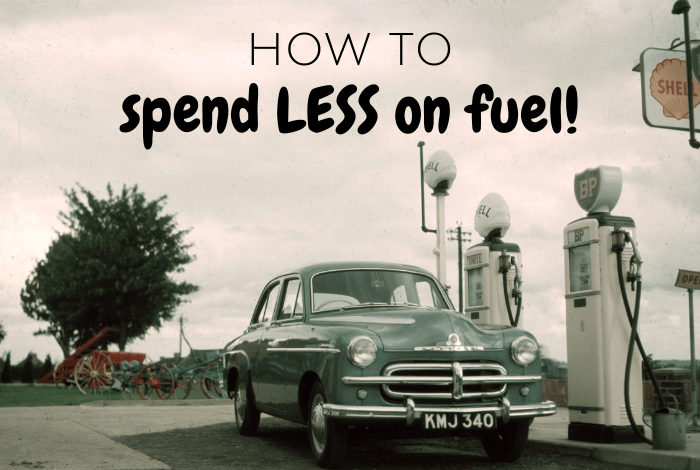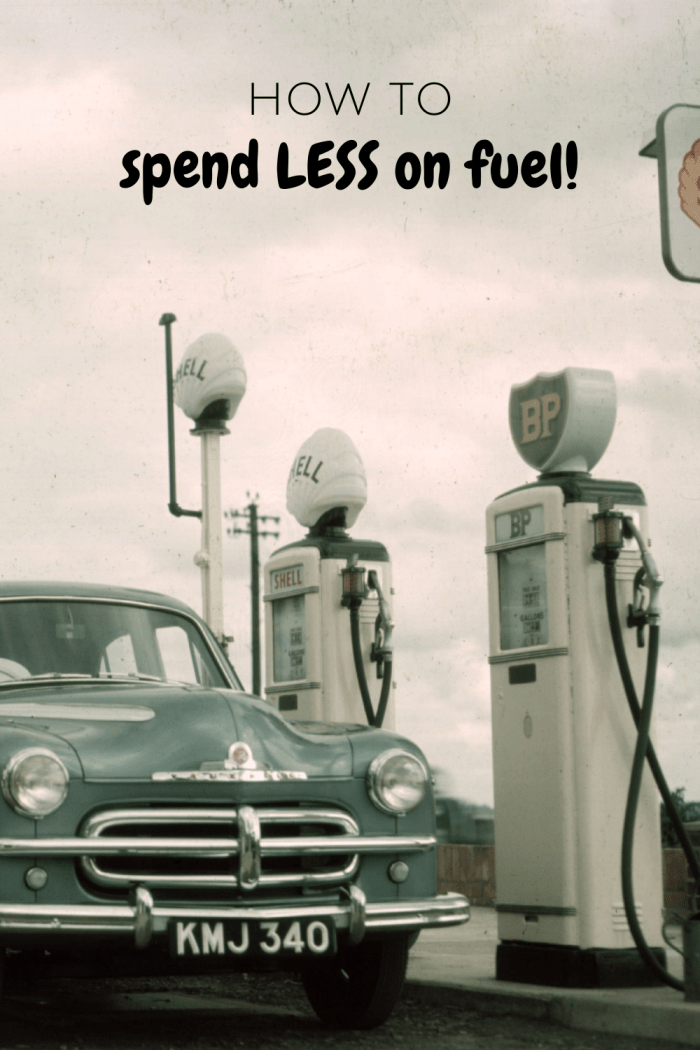Even before the rising fuel prices, I was super conscious about how I could save money on fuel due to my 80-mile round trip commute to work but now I’m even more focused. This post is all about how to spend less on fuel and hopefully, there’ll be a few tips in there to help everyone!

You might have read recently that my daily commute is a little bit longer than it used to be which has, in turn, increased the amount of money I spend on petrol. It’s quite a significant increase so over the last month or so I’ve really gotten the hang of how to drive more efficiently and discovered other ways to reduce how much petrol I use and therefore, spend less on fuel.
Here are a few of the ways I save money on fuel – trust me, they work!
Cut your speed
We’ve all know that the faster we drive, the more fuel we use! But did you know that a car driving at 80mph instead of 70mph uses 10% more fuel? Or that a car driving 70mph instead of 50mph uses 15% more? That’s a fair amount when we look at the prices that we’re paying per litre right now for our petrol and diesel!
As much as that’s a huge benefit to your pocket, it’s not even the biggest benefit that you could see from reducing your speed as I’ve read research this week that categorically shows that reducing our driving speeds mean fewer accidents and where there are accidents, they’re less severe. I read that a 1mph reduction in driving speed results in around a five per cent reduction in collisions and although I don’t know the science behind that research, it’s just more reason to make me drive that bit slower.
My drive to work might be longer these days but it’s actually a pretty easy drive (if I time it right and miss the traffic) with about 8 miles of 50mph and another 25 ish miles at 70mph on a dual carriageway so this little bit of knowledge could really save me!
Drive consistently
The more you need to brake and accelerate again, the more fuel you’ll end up using so try to drive as consistently and efficiently as you can by trying to anticipate the road ahead wherever possible for a smoother drive. Another little gem from Google, while I was trying to get some actual facts and figures for this, is that some tests have shown that aggressive driving, including frequent rapid acceleration and hard braking, can increase fuel consumption by approximately 40%.
Now I personally think that’s an over-exaggeration and you’d have to be driving super aggressively to get to that point but there are definite savings to be made! For example, there’s no point accelerating hard to catch up to the car in front when you’re going to have to brake anyway because it’s going slower than you! The same principle applies for speed bumps too – don’t accelerate between them when you’re going to have to slow down again to go over the next one.
Watch your RPM and Drive settings
My little car is automatic but if you have a manual car then you need to keep a close eye on your RPM as revving the car too much or too little isn’t energy-efficient and will cost you more. For petrol vehicles, your optimum range is usually between 1,500 and 2,500 rpm and for diesels, it’s somewhere between 1,300 rpm and 2,000 rpm.
For me, in my automatic, I can’t control that but I can control the driving mode which in turn controls the efficiency of the car. I can set mine to dynamic, efficiency, comfort and auto I think from memory. For the first month or so, I drove it in dynamic (which I think is the Audi version of Sport Mode in most cars) as I love the way the car drives in that mode but I soon switched to efficient when I got over the novelty and remembered that saving money is better than a fun drive. Dynamic mode changes several settings on the car including the feel of the steering, exhaust note, suspension and transmission – in simple fuel efficiency terms it’s keeping the RPMs higher and will use more fuel.
Check your tyres
Make sure your tyres are the right tread depth as that’s a factor in how much fuel your car uses up too. In fact, research shows that if your tyres are under-inflated by 20% or around 6psi then 3% more fuel is used which should be enough to make you check yours right now.
It’s an even bigger factor in how safe your car drives though so if not for the money, check them to make sure you’re safe.
Don’t ignore your service reminders
Keeping on top of your car services and necessary maintenance will not only help maintain your car and keep it running longer but will also help keep it running efficiently and using as little fuel as possible. And it’ll help maintain the value of your car if you plan to sell it one at any point.
Be aerodynamic
Think Formula 1 – the more aerodynamic your car is the more efficient it will be so the less fuel you’ll use. This means no roof boxes unless you need them and try and not have the windows down – easier said than done on a hot day in a car.
Switch off the air con
Using the air con in your car, especially when you’re travelling at lower speeds, definitely affects your fuel consumption so unless you’re melting in a heatwave step away from the air-con button. It can increase your fuel usage by between 5 and 7% if you’re driving around town apparently although for reasons I don’t understand it doesn’t have as big an impact if you’re driving faster.
Reduce the weight in your car
A car is more efficient if the load is lighter so don’t have a boot full of unnecessary stuff like I sometimes do. I once filled (and I mean filled) my boot with things to take to the charity shop and then drove around with a boot filled with books and board games for a good three weeks until I finally got around to dropping the stuff off.
Check your local fuel prices
There’s a huge difference in the petrol prices near me although it’s all super high at the minute! The petrol on the main road I travel to back and forth to work hit 167p this last week whereas the local Morrisons is lower at something like 151p so being clever about when and where I fill up is going to save me. Morrisons also just finished an offer where you got 7p per litre off when you spend £40 in store so keep an eye out for offers like that.
Ditch the car
I know this is an obvious one but I couldn’t write a post on how to spend less on fuel costs without dropping this one in! If it’s an unnecessary journey or one that you could walk rather than drive then leave the car at home. Also, see if there’s an option for car sharing for your commute to work or if you’re meeting a friend somewhere then arrange to travel with them.
If you try and do as many of the above as possible, you should notice that you spend less on fuel than you’re spending right now!
Don’t miss out on future posts like this – receive updates directly to your inbox by email by adding your email address here and hitting subscribe. You can also follow me on Twitter or BlogLovin and I’d love to see you over on my Facebook page and on Instagram. If you’re interested, you can find out more about me here and while I’ve got your attention, if you’re wondering why some of my posts lately are a little bit less frugal then have a read of this post. 😉
Do your future self a favour – Pin ‘ How to spend less on fuel’ for later:





